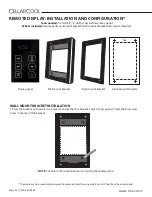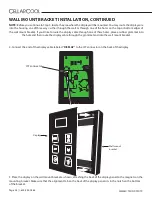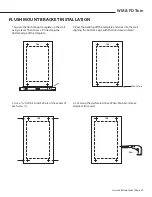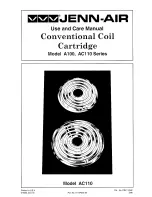
Page 36 | 1-800-343-9463
WM&FD TWIN
051019
INSTALLING THE CONDENSING UNIT (continued)
Evacuation
•
Remove the nitrogen tank from the manifold and attach the manifold to the refrigerant tank.
•
Install a micron gauge on the access valve near each evaporator unit.
•
Mid-seat both service valves.
•
Install service caps on the valves.
•
Energize the liquid line solenoid valve.
•
After confirming that there is fresh oil in the vacuum pump, connect the 3/8” hose from the manifold to the pump.
•
Start the pump and run it until the micron gauge on each evaporator unit reads 200 microns or less.
•
Disconnect the vacuum pump from the system.
•
Break the vacuum with R-134a refrigerant.
•
Remove the micron gauge from the access valve.
Charging
•
Install a low-pressure gauge on the access valve near each evaporator unit.
•
With the power off to the condensing unit, admit liquid refrigerant through the liquid line service valve until the refrigerant
stops flowing.
•
Turn on the circuit breaker for the condensing unit. The compressor should turn on if the pressure in the suction line is above
25 psig.
•
Add refrigerant through the suction line service valve by throttling in small amounts of liquid refrigerant in two-second
intervals. (Refrigerant must be throttled in or the compressor may be damaged.) Observe the sight glass. If bubbles are
present, add more refrigerant until the sight glass is clear.
•
Once the sight glass is clear, check the superheat at the suction line service valve. Adjust the TXV until the total superheat is
between 20-30°F.
•
Under normal operation, with the wine cellar at 55°F and the ambient temperature at 85°F, the low side pressure should be
between 28-32 psig and the high side should be between 160-180 psig.
Finalizing the Installation
•
Confirm that the entire suction line from the TXV to the suction line service valve is insulated using cellular insulation or
equivalent. Seal all seams with Armaflex 520 foam insulation adhesive or equivalent.
•
Confirm that the control is displaying the correct temperature and that no alarms are present. Refer to page 46 for corrective
action if alarms are present.
















































